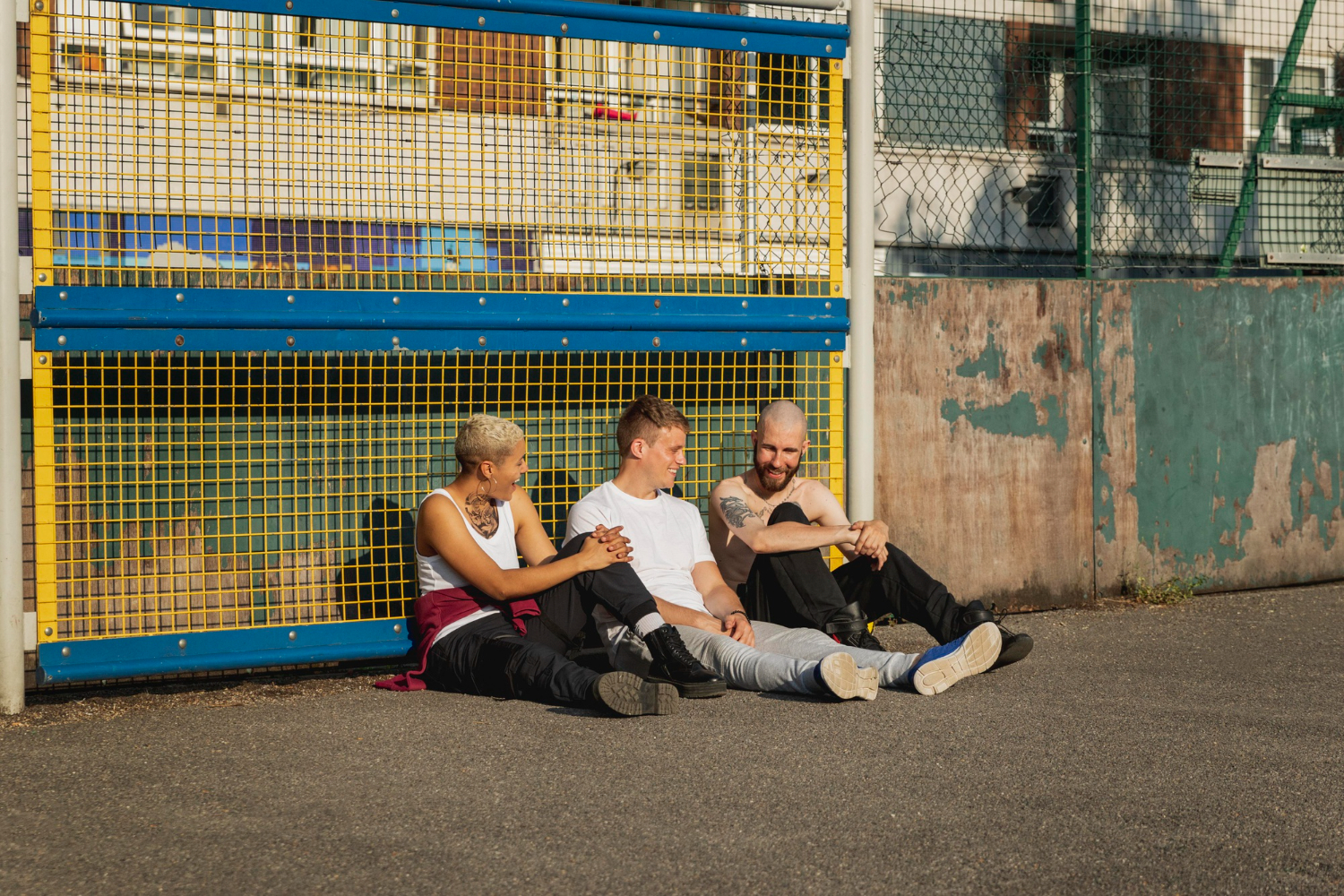Top 10 Street Football Nations
Street football is raw, creative, and often unpredictable. It strips the game back to its essence, no polished turf, no linesmen, no tactical diagrams, just a ball, a space, and a hunger to play. Some countries have built entire footballing cultures on street games, forging generations of stars who honed their craft in alleyways, car parks, or dusty lots. These nations produce flair, technique, and personality on the pitch because their players grow up expressing themselves where no two games are the same.
From samba rhythms to back-alley brilliance, here are the top 10 street football nations that continue to shape the soul of the beautiful game.
1. Brazil
No nation defines street football quite like Brazil. From the favelas of Rio to the beaches of Copacabana, football is part of daily life. The Brazilian style, jogo bonito, is not just about goals; it’s about how you play. Street football here teaches agility, rhythm, and showmanship. Legends like Ronaldinho, Neymar, and Romário were all shaped by informal matches that demanded creativity over structure.
Street games in Brazil are often played barefoot on uneven surfaces, forcing players to develop a delicate touch. The tight spaces mean quick dribbling and vision are key. Brazilian street football doesn’t just produce players, it shapes artists with a ball.
2. Argentina
While Argentina’s footballing identity is rooted in passion and grit, its street football culture adds a layer of improvisation that’s deeply ingrained. Kids play in small urban spaces, rooftops, and even indoor warehouses. These informal arenas shape players who are tough, technical, and emotionally fearless.
Think about Diego Maradona’s slalom run against England or Lionel Messi’s lightning-quick feet. Both honed their craft outside the structured academy system before transitioning to bigger stages. Argentine street football is unforgiving, it teaches resilience as much as flair.
3. Nigeria
In Nigeria, football is everywhere, on city streets, school fields, and rural patches of red earth. What stands out about Nigerian street football is the sheer physicality mixed with flair. Players are expected to be fast, strong, and fearless. Whether it’s Lagos or Kaduna, football serves as an escape, a unifier, and a dream engine.
Many of Nigeria’s stars, Jay-Jay Okocha, Obafemi Martins, and more recently Victor Osimhen, emerged from these gritty beginnings. The games are spontaneous and often intense, where skill is nothing without heart. In Nigeria, street football teaches you to earn your spot every time you step on the pitch.
4. France
France might be known for its world-class academies, but many of its best players start on the streets. The banlieues (suburbs) around cities like Paris and Marseille are teeming with talent. Small concrete courts, often enclosed by fencing, are the battlegrounds where future stars are made.
Zinedine Zidane, Paul Pogba, Kylian Mbappé, all come from environments where flair was not just allowed but encouraged. Street football in France combines athleticism, flair, and tactical intelligence. It’s also diverse, drawing influence from immigrant cultures and urban art, shaping players who are fearless and expressive.
5. Ghana
Ghana’s footballing identity is woven into its street culture. On any given day, kids in Accra or Kumasi organize informal matches with whatever ball they can find, plastic, rubber, even rolled-up socks. These games are unstructured but intensely competitive. Players learn balance, composure, and dribbling through necessity.
Street football in Ghana emphasizes one-on-one duels. It’s not unusual to see nutmegs and drag-backs executed with confidence. Stars like Michael Essien and Thomas Partey emerged from this tradition, and you can still see echoes of that street grind in their styles of play.
6. Netherlands
The Netherlands is unique because street football is not just a pastime, it’s part of youth development philosophy. The country has invested in pannaveldjes (small-sided courts), particularly in urban neighborhoods, where creativity thrives. Dutch players learn to play under pressure, with limited space, and develop superior footwork and vision.
The legendary Johan Cruyff was a huge proponent of street football and helped fund mini-pitches across the country. Players like Clarence Seedorf, Memphis Depay, and Frenkie de Jong all spent hours mastering the ball in these tight, competitive environments. Dutch street football is about skill and IQ.
7. Senegal
Senegal is another African powerhouse where football is part of the cultural rhythm. Street games in Dakar or Saint-Louis are fast-paced and physical. These matches often demand adaptability because surfaces vary wildly, sand, gravel, asphalt, and players must adjust quickly.
Street football in Senegal produces athletes who are explosive and resilient. The lack of formal coaching early on often means players develop unorthodox styles, which become advantages later. Sadio Mané is a perfect example, his movement and close control are deeply influenced by the conditions he grew up playing in.
8. England
While England is known for organized club football, street football has played a vital role in shaping its flair players. In places like London, Birmingham, and Manchester, cage football is a proving ground. These small-sided, high-pressure games demand fast decisions and encourage individuality.
The rise of players like Raheem Sterling, Jadon Sancho, and Bukayo Saka has highlighted this shift. Street football in England is now more celebrated than before, with cultural crossovers from music and fashion amplifying its presence. The emphasis is on control, confidence, and making your mark.
9. Colombia
Colombia’s love for football often begins in the streets of Bogotá, Medellín, and Cali. Here, the rhythm of the game mirrors the rhythm of music. Kids play with energy and joy, developing close control and an instinct for flair. The streets aren’t just training grounds, they’re stages.
Colombian street football is expressive. Players often showcase tricks, flicks, and spontaneous skills. Legends like Carlos Valderrama and modern stars like Luis Díaz embody that spirit. The pressure of limited space forces quick thinking, while the culture celebrates those who dare to entertain.
10. Morocco
In Morocco, football is a daily ritual. Whether it’s in the narrow alleys of Marrakech or along the Atlantic coastline, kids find ways to play. Street football here is often played barefoot or in sandals, and surfaces are rarely forgiving. That environment forges players with excellent balance, agility, and composure.
The Moroccan style blends North African flair with European structure. Street football is where it all begins, players learn to deal with contact, find passing angles in tight spaces, and develop excellent first touches. Stars like Achraf Hakimi and Hakim Ziyech were shaped by these informal battles.
Why Street Football Still Matters
In an age of elite academies and sports science, it might seem like street football is outdated. But in reality, it’s the ultimate developer of personality. It teaches players to express themselves, adapt on the fly, and build confidence in their instincts. There’s no coach telling you what to do, no drills, you learn by doing.
The best street football nations are those where football isn’t just organized sport, it’s life. It’s played at break time, after school, before dinner, and often under streetlights. That frequency, freedom, and chaos create uniquely gifted players.
Shared Traits Among Street Football Nations
What unites these top nations isn’t infrastructure or wealth, it’s passion and access. A ball and a few friends are all it takes. These places don’t wait for a perfect pitch or shiny kits. The imperfections are part of the game, and that unpredictability breeds resilience and flair.
Street footballers don’t just play to win, they play to stand out. They want to be remembered for that backheel, that nutmeg, that moment of magic. And that’s why the world keeps looking to the streets for its next football icon.
Final Thoughts
Street football is more than a stepping stone, it’s the soul of the sport. The top 10 street football nations continue to lead the way in producing players who bring something different to the pitch. Whether it’s Brazil’s samba flair, Nigeria’s fearless drive, or France’s urban elegance, these countries prove that the game doesn’t need perfection, just passion and a ball.
If you want to find the future of football, don’t look at the most expensive academies. Look at the street corners, dusty lots, and fenced-in courts. That’s where legends are born.







